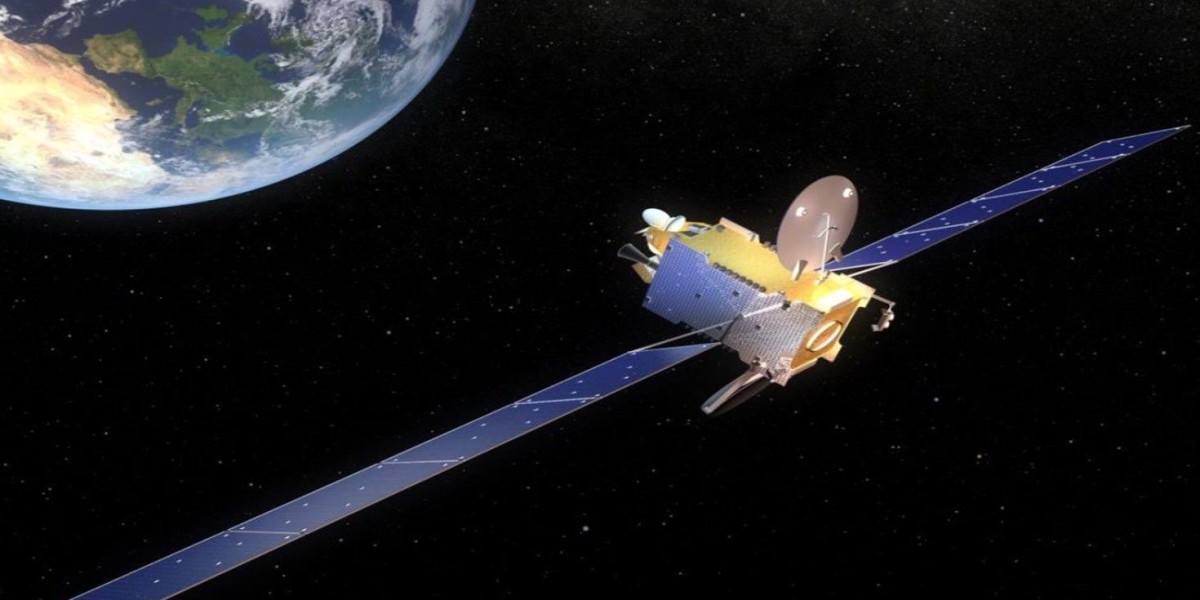Satellite electric propulsion is enabling a revolution in space mobility. With new radiation-tolerant thrusters, advances in miniaturization, and increased mission lifespans, operators and manufacturers worldwide are leveraging breakthroughs to make both advanced and small satellites more versatile, reliable, and sustainable. From interplanetary maneuvers to mega-constellation management, recent collaborations and technology unveilings point to rapid transformation across the sector.
According to Straits Research, the global satellite electric propulsion market size was valued at USD 589.21 million in 2024 and is projected to grow from USD 613.37 million in 2025 to USD 845.91 million by 2033, growing at a CAGR of 4.10% during the forecast period (2025–2033). The integration of electric propulsion solutions is driven by satellite operators’ need for lower mass, extended lifetime, reduced fuel costs, and enhanced maneuverability—features increasingly critical in the crowded low Earth orbit.
Breakthroughs in Electric Propulsion Technology
Major developments in the past year highlight the sector’s accelerating pace. Enpulsion (Austria) unveiled the Nexus propulsion system in May 2025, boosting thrust for satellites up to 500 kg and improving orbit-raising ability using innovative FEEP technology. This system addresses the industry’s demand for high performance in small satellite missions and is positioned as a compelling alternative to conventional Hall Effect Thrusters for various platforms.
ISRO (India) has achieved a milestone with the successful completion of a 1,000-hour life test for its 300 milliNewton Stationary Plasma Thruster (SPT), taking strides toward all-electric satellite launches and increasing payload capacity. This advance is part of a broader shift that promises efficient orbit-raising, station keeping, and eventual deep space maneuvers leveraging xenon-fueled, high-specific-impulse thrusters.
In April 2025, IHI Corporation (Japan) finished in-orbit testing of its chemical-electric hybrid propulsion system, paving the way for more versatile and cost-effective mission architectures for Japanese satellites. Europe remains at the forefront, with Airbus (Netherlands) delivering all-electric propulsion platforms to minimize launch weight and maximize operational flexibility.
Key Players and Competitive Dynamics
A mix of legacy aerospace and energetic new entrants dominate global electric propulsion innovation:
Airbus (Netherlands): Renowned for xenon ion propulsion systems, leading commercial satellite innovation and all-electric satellite platforms.
Moog Inc. (USA): Supplies trusted propulsion modules for communications and Earth observation satellites, supporting constellation expansion.
Neutron Star Systems (Germany): Develops superconducting electric propulsion systems, focusing on increased efficiency and reduced energy use.
Aliena Pte Ltd. (Singapore): Innovative compact propulsion solutions for small satellites, targeting high-efficiency, scalable missions in Asia-Pacific.
Busek Co. Inc. (USA): Hall thrusters for NASA, commercial telecom, and defense—sets reliability benchmarks in mission-critical use cases.
Accion Systems (USA): Pioneers scalable propulsion for CubeSats and micro-platforms using ion engines adapted for tight energy budgets.
Enpulsion GmbH (Austria): FEEP systems deployed globally on over 280 satellites, now expanding into higher thrust classes with Nexus.
ArianeGroup (France): Integrates electric propulsion within European satellite launch vehicles, enabling reduced launch mass and flexibility.
Safran, Thales Alenia Space, SpaceX (USA), Northrop Grumman (USA): Power leading constellations and interplanetary missions with electric propulsion-driven platforms, maximizing operational reach.
Country-Wise Innovations and Updates
India: ISRO's breakthrough with a 1,000-hour SPT test marks a major leap for indigenous electric propulsion development, with upcoming launches moving toward fully electric orbit-raising and station keeping.
Austria: Enpulsion leads with the launch of the Nexus system, positioning its scalable FEEP modules as frontrunners for high-thrust, efficient missions globally.
USA: Moog, Busek, and Accion Systems fuel both commercial and government satellite programs; recent launches by SpaceX for Starlink and ICEYE for Earth observation underscore growing demand for electric-enabled constellations.
Japan: IHI Corporation completes hybrid propulsion in-orbit testing; Japan's dynamic space industry increasingly integrates hybrid solutions into government and private missions.
Europe: Airbus, ArianeGroup, Thales Alenia Space drive adoption of all-electric satellite buses, helping EU operators achieve payload gains and extended mission lifespans with reduced launch mass.
Singapore: Aliena’s low-power systems support regional growth in small satellite launches for telecom and imaging.
Germany: Neutron Star Systems harnesses superconducting technology, preparing for next-gen platform deployments in 2025 and beyond.
Growth Drivers and Trends
The continued expansion of global satellite constellations—especially in telecommunications and Earth observation—fuels demand for electric propulsion solutions that minimize fuel and maximize operational range. The trend toward smaller satellites and more frequent launches makes electric systems especially attractive for mission flexibility, station keeping, collision avoidance, and end-of-life deorbiting. Satellite launches, which topped 1,200 in just the first four months of 2025, reflect this intense growth and the urgent need for innovative propulsion.
Eco-friendly propulsion, including green propellant options, is rising as operators seek sustainable operations and reduced in-orbit mass. Government R&D investments, AI-powered on-board analysis, and new manufacturing cost management strategies signal a wave of high-efficiency, longer duration electric satellite missions in the years ahead.
Recent News
Enpulsion (Austria) released the Nexus propulsion system in May 2025 for enhanced thrust and orbit-raising capability.
ISRO (India) successfully completed a 1,000-hour life test for its 300mN plasma thruster, preparing for technology demonstrations on future Indian missions.
IHI Corporation (Japan) concluded in-orbit hybrid propulsion tests on government satellites in April 2025, expanding its flight-proven product lineup.
ICEYE (USA) launched four SAR satellites in August 2024, expanding Earth observation capacity and demonstrating demand for electric propulsion-enabled station keeping.



